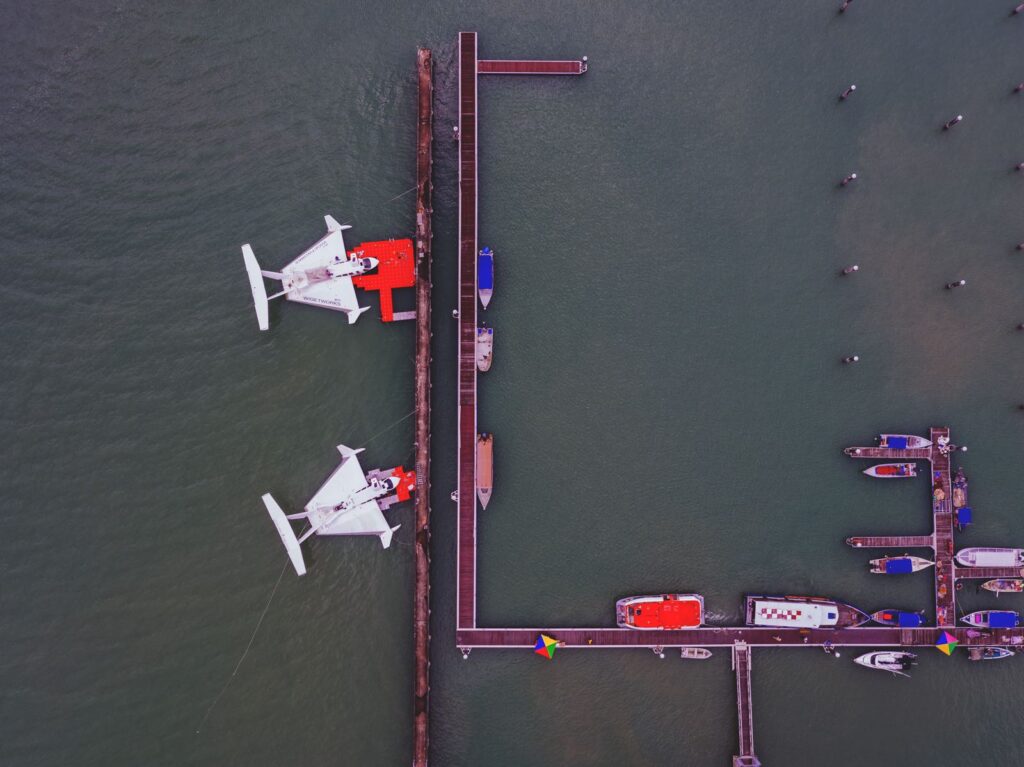Most of us had never heard of a Wing In Ground (WIGThe term 'Wing-In-Ground (WIG) craft' means a multimodal craft which, in its main operational mode, flies in close proximity to the surface by utilizing surface-effect action. Are you interested in learning more about WIG craft? Find out more here - What are wing in ground craft? More) Craft or surface effect action until we first read COLREGs rule 3. So what is this strange craft and why is it mentioned so often in the COLREGs?
Surface Effect Action – Part Boat Part Plane
We know from the rules a WIG craft is a ‘multi-modal craft [which] flies in close proximity to the surface by utilising surface-effect action’. This means that WIGs can float and fly, when they are in the air they stay close to the surface generating a cushion beneath their wings which assists with generating lift.
WIG craft were first designed as a fast alternative to a medium-sized boat. Although limited in terms of tonnage they can fly at speeds upwards of 90 kts and are therefore useful for high-speed passenger services and some military uses.
Like hovercraft WIG craft are less capable in high wind and sea states. For this reason you are most likely to find WIG craft in sheltered waters. In 2019 Sea Wolf Express revealed plans to provide a WIG craft service in the Gulf of Finland. This is one of many examples of an attempt to reintroduce WIG craft following a decline in popularity since there initial conception over 40 years ago.
WIG Craft and Collision Regulations
The WIG craft raises some concerns in terms of collision avoidance. The craft’s high speed and close proximity to the surface could make it difficult for vessels to identify and avoid it. Some WIG craft can’t gain altitude quickly. This means that they may not be able to avoid an object by flying over the top of it. Recognising these limitations, in 2001 the IMO amended the COLREGs to include WIG craft.
The assembly came to the decision that WIG craft taking off, landing and in flight near the surface shall keep well clear of all other vessels and avoid impeding their navigation. However a WIG craft operating on the water should follow the rules as a power-driven vesselThe term 'power-driven vessel' means any vessel propelled by machinery. . This is different from a seaplaneThe word 'seaplane' includes any aircraft designed to manoeuvre on the water. which is still required to ‘keep well clear’ of all vessels even when on the water.
The IMO provides additional guidance for WIG craft operators outside of the COLREGS. In these guidelines craft are split into three categories based on their ability to avoid an obstacle by flying over the top of it.
What is next for Wing In Ground Craft?

In recent years a number of private organisations have developed plans to produce small wing in ground craft designed for low passenger numbers or personal use. This resurgence in interest has caused concerns over craft safety to reemerge.
In some parts of the world governments have organised marine aircraft using a water aerodrome. Authorities separate air and surface marine traffic, allocating an area of water for aircraft to take off and land. Increased numbers of WIG craft could require governments to adopt similar traffic management processes.
If you have found this article useful please share it with a friend. Also, send us a message telling us what other topics you think we should cover.
